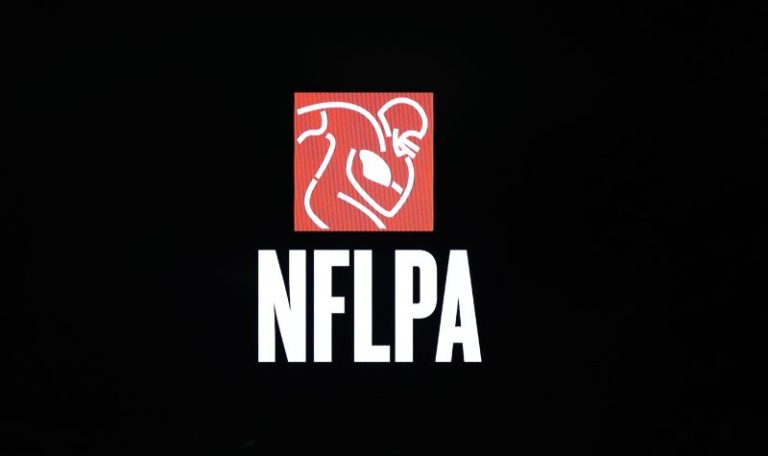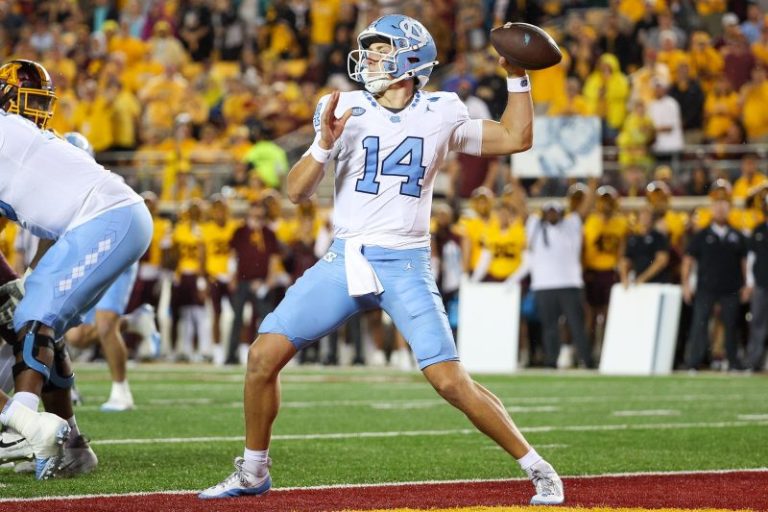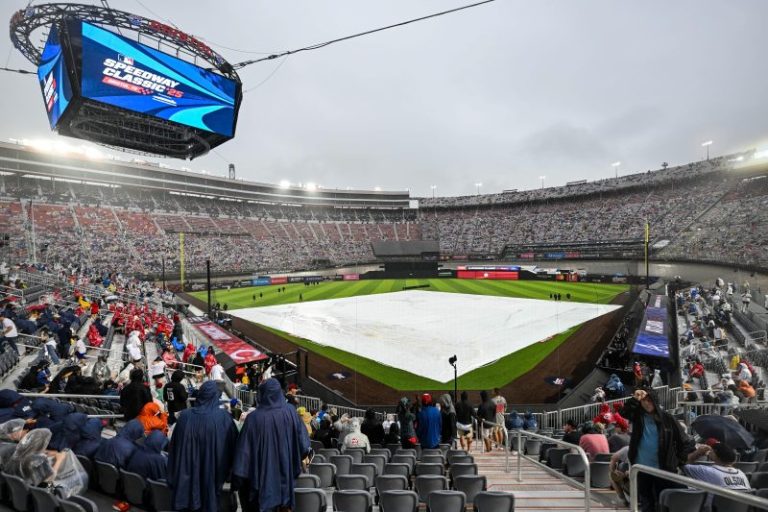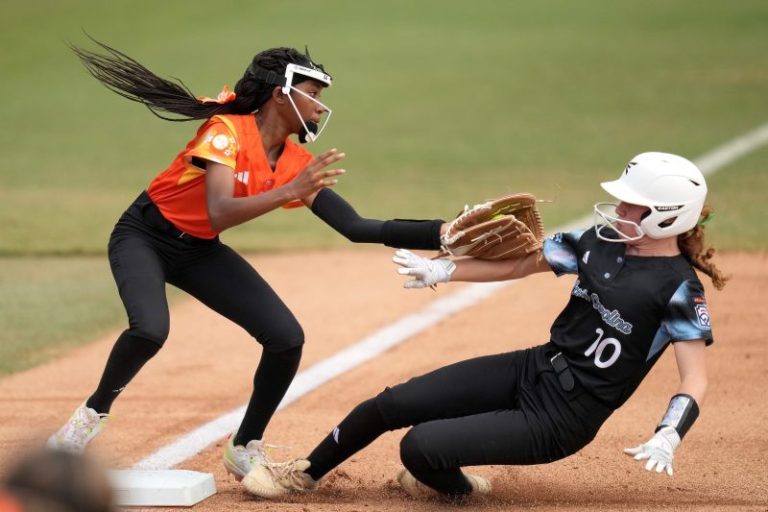- The Minnesota Twins were big sellers at the deadline, trading 10 players in 24 hours.
- Carlos Correa’s return to Houston looked unlikely but Astros didn’t relent.
- Padres sent one of MLB’s top prospects to Athletics in blockbuster Mason Mill trade.
It was ugly. Outrageous. Unfathomable. Disgraceful.
It was perhaps the most stunning and quickest fire sale in baseball history.
The Minnesota Twins, that lovable little team in the upper Midwest that once won two World Series titles in four years, with St. Paul producing four Hall of Fame ballplayers from the same neighborhood who played for the Twins, ripped out the heart of the franchise in less than 24 hours.
They traded 10 active major-league players from their team, including 11 players off their 40-man roster, and saved $26 million in one fell swoop.
They traded away All-Stars. They traded away a World Series champion. They traded away their team captain. They traded away their popular homegrown dude.
They traded away their soul.
The fire sale was so hideous that a local bar in Mankato offered free drinks for anybody wearing Twins attire.
The promotion: ‘Free Drinks For All Twins Fans! Because this level of (expletive) requires alcohol.’
While everyone in Minnesota has been imploring the Pohlad family to sell the team as quickly as possible, they didn’t mean for the Pohlads to take it literally, selling off everything but the cup holders.
“The deadline was going to be a complete dud,’ one current general manager told USA TODAY Sports, “but what changed the entire deadline were the Twins selling. They said they were going to just trade players on expiring contracts. They were going to re-visit the other stuff in the winter. Then, they started selling off everyone.
“I mean, no one expected them to do this. They had everyone going everywhere. The trade deadline wouldn’t have been nearly this active without the Twins doing what they did.’
The GM spoke to USA TODAY Sports on the condition of anonymity in order to freely analyze the trade deadline.
Houston Astros owner Jim Crane, who was golfing with Twins Hall of Famer Joe Mauer last weekend in Cooperstown, N.Y., during the Hall of Fame weekend, perhaps lit the first match in the fire sale in a casual conversation at the Leatherstocking Golf Course. He mentioned that they might try to pursue All-Star shortstop Carlos Correa, and with the Twins so deep in debt – about $440 million – that Minnesota may have no choice but to dump him.
Crane returned home and had Astros GM Dana Brown telephone the Twins to inquire if they would be willing to trade Correa and one of their outfielders to the Astros. Oh, and could they pick up about $50 million of the remaining $103 million on Correa’s contract, too? The Twins laughed, and hung up.
When USA TODAY Sports contacted Correa’s agent Scott Boras to inquire whether Correa would waive his no-trade clause, he laughed, too. Correa loved Minnesota, he said. The Twins loved him. Besides, there was no way, he said, the Astros would take on that kind of money.
Correa’s phone started to blow up with messages when USA TODAY Sports published a report Wednesday morning that the Astros were interested in a possible reunion. Correa was completely caught by surprise, and he too, scoffed at the idea. “That’s nothing that’s serious right now,’ he told reporters.
While some were dismissive of the idea, Crane refused to blink. He wanted to make sure the Twins understood the severity of their financial woes. The Twins are deep in debt. They are trying to sell the team for $1.7 billion. The team will be more attractive to every suitor, Crane said in talks with the Pohlad family, if their payroll was slashed. Correa’s contract happened to be the biggest financial commitment.
The Pohlad family got back to Derek Falvey, Twins president of baseball operations. They suddenly were curious. Correa, who left the game early Tuesday with a migraine, suddenly felt good enough to sit down with Falvey, himself. If the Twins indeed are rebuilding, he said, he’d gladly waive his no-trade clause for a chance to get back to Houston.
Crane, realizing he suddenly had the Twins’ attention, used his business acumen. The Astros kept hammering away at the Twins, and at one point, even talked about Astros first baseman Christian Walker being part of the package. By mid-afternoon Thursday, hours before the trade deadline, they got the Twins to swallow $33 million that would be spread over the life of the contract.
Just like that, after originally offering Correa a five-year, $160 million contract to remain in Houston after the 2021 season to avoid free agency, the Astros got him back for three-plus years at just $70 million.
Finally, after watching his clients like Alex Bregman, Gerrit Cole and Correa depart Houston in free agency, Boras told Crane, “Jim, we finally have a deal.’
The Twins’ teardown jumped into high speed, and by the end of the day, the only confusion was why All-Star pitcher Joe Ryan was still wearing a Minnesota uniform.
Wondered one GM who was in trade talks with the Twins: “Why keep him when you traded everyone else?’
Valid point. The Boston Red Sox tried, but pivoted to Dodgers starter Dustin May, leaving Ryan as a top trade target this winter.
The Twins’ fire sale was so ruthless that 27-year-old reliever Louie Varland, the hometown kid who absolutely loved being a Twin, making only $8,150 more than the minimum salary, and wasn’t even eligible for salary arbitration for two more years, was dumped and sent to the Toronto Blue Jays with first baseman Ty France.
Varland was devastated, leaving Twins players seething and rivals GMs dumbfounded as to why the Twins would actually trade a valuable reliever (2.02 ERA, 47 strikeouts in 49 innings) with five years of control. My God, he was born and raised in St. Paul, with his wife and a family coming to virtually every home game. This is the way you treat him?
“By and large across the board, [these] were baseball trades, trades we felt we got real talent back,’ Falvey told reporters, “and were not geared toward the financial flexibility component to it.’
Believe it or not, those words were uttered with a straight face.
Meanwhile, the Twins, who had to call up eight players from the minor leagues just to field a team Friday, will play on. They’ve got no choice. Maybe they’ll be a contender one day again. But for now, it’s 34 years and counting since they’ve been to the World Series, and the only thing that can save them is for the Pohlad family to sell the team as quickly as possible.
Yet, even when the Twins finally are sold, the scars and memories from this dark day of July 31, 2025, will last for generations.
While the Twins certainly stole the trade show, let’s present our 2025 trade deadline awards, with the assistance of GMs, executives and scouts.
Best difficult trade
Athletics (of Sacramento)
They really had no intention of trading closer Mason Miller. He was their prized hometown product, a third-round pick in the 2021 draft. He was their All-Star. He was their most electric reliever in the game. And he was theirs through 2029.
Yet, what good is it having a lights-out closer, striking out 13.85 batters per nine innings, when you don’t have enough games to save?
The A’s, wanting to make sure they have a powerful contender when they get to Las Vegas in 2028, had no choice but to accept the San Diego Padres’ overwhelming offer: prized 18-year-old infielder Leo De Vries, and right-handed pitchers Braden Nett, Henry Barez and Eduarniel Nunez. They were the Padres’ No. 1, No. 3, No. 13 and No. 17 prospects.
“Ultimately, it took a player the caliber of De Vries to get our attention and get us to the negotiating table,’ A’s GM David Forst told MLB.com. “In Mason’s case, we knew it was going to take something special. When the Padres suggested they were open to including Leo, that’s kind of when this got serious.”
Was it a smart move by the A’s?
“It was a no-brainer,’ one GM said. “Look, the kid throws 102 mph. Guys don’t sustain throwing 101-102 for six years. I don’t know how many years he has. At some point, he’s going to break. Guys just don’t have the consistency of a Mariano Rivera or Trevor Hoffman.’
“So the A’s had to do it. Really, they had no choice.’
Most bang for their buck
New York Mets
Sure, no one did more than San Diego Padres GM A.J. Preller, but it cost him 17 prospects to get five players. But no one got more by giving up less than David Stearns of the Mets, rival GMs and executives overwhelmingly say. They acquired closer Ryan Helsley from the St. Louis Cardinals, setup man Tyler Rogers from the San Francisco Giants, reliever Gregory Soto and center fielder Cedric Mullins of the Baltimore Orioles, without touching their most prized prospect.
“The Padres had to go for it because of all of the back-loaded contracts,’ one rival GM said. “At some point, a rebuild is going to have to come, but for now, they’re willing to do everything it takes.
“But what Stearns did was a stroke of genius. They traded away a lot of bodies, but no real prospects. Stearns had a hell of a deadline.’
Least bang for their buck
Arizona Diamondbacks
The D-backs thought they were going to clean up at the deadline with third baseman Eugenio Suárez, easily the best position player available, along with first baseman Josh Naylor, starters Merrill Kelly and Zac Gallen, outfielder Randal Grichuk and reliever Shelby Miller.
Nope.
The best they got in return was $18 million in savings, thanks in part to the Milwaukee Brewers taking on part of Jordan Montgomery’s salary as part of the Miller deal where the Brewers didn’t send back one of manager Pat Murphy’s pocket pancakes.
The overall return was ugly. The best prospect they received was only Mariners Triple-A first baseman Ryan Locklear, who couldn’t crack the Seattle roster, along with a whole lot of questionable young arms. The pitcher with the highest upside is David Hagaman, 6-foot-4, who throws 98-mph but is only in Class A.
The D-backs were frustrated at the little interest shown in Suárez, despite his 36 homers and 87 RBIs. Once the Yankees pivoted to Ryan McMahon of the Rockies, and the Cincinnati Reds grabbed Ke’Bryan Hayes, the market shrunk. It was a painful reminder of the little demand for position players at the deadline. As one GM said, all you have to do is look back to see the little return the Detroit Tigers received from the D-backs in 2017 to remind everyone that position players just aren’t as attractive as relievers this time of year. It also didn’t help, executives say, that Suárez is 34 years old and was nearly released a year ago.
The Diamondbacks barely even got a sniff for Gallen, who finished third in the Cy Young balloting two years ago. They were left with no choice but to keep him and will give him a qualifying offer to at least get a draft pick in return.
Finding money under the couch cushion
Jordan Montgomery, recovering from Tommy John surgery with the Diamondbacks, was stunned to find himself traded to Milwaukee when he hasn’t thrown a pitch since spring training and is a free agent at the end of the season. Imagine everyone’s surprise, too, when they learned he has a $500,000 bonus for being traded.
Biggest tax break
Carlos Correa, playing for the Twins with a home in St. Paul, was residing in a state where the tax rate is 9.85%. He was traded to the Astros where there are no state taxes in Texas. He just saved himself $4.7 million, and even more, considering the AL West schedule features road games in Arlington.
Worst first impression
New York Yankees
The Yankees overhauled their bullpen, bringing in three new shiny toys and featured them all in the first game after the trade deadline.
What happened?
Jake Bird (acquired from the Colorado Rockies) came in and gave up a grand slam. Dave Bednar (Pittsburgh Pirates) coughed up a lead. And Camilo Doval (San Francisco Giants) blew the save, with the Yankees losing 13-12 to the Marlins.
It was the first time since July 24, 1940 against the St. Louis Browns at Sportsman’s Park that they scored 12 runs in a game and lost.
The three relievers combined to give up nine runs (seven earned) in 2.1 innings.
“It was definitely not an ideal start,’ Bednar told reporters, “by any means.’
Oh, and for good measure, new addition Jose Caballero made a massive gaffe in the ninth inning when he ran past a routine ground ball in right field for a critical two-base error.
Best mulligan
The Seattle Mariners sent third baseman Eugenio Suárez to the Arizona Diamondbacks 20 months ago in a salary dump for Carlos Vargas and Seby Zavala, only to watch Suárez become one of the elite power-hitting third basemen in the game while they missed the postseason by one game. Their team’s basemen combined to hit just 12 homers and 49 RBIs while Suárez had 30 homers and 101 RBIs by himself.
The Mariners traded back for him to make sure it doesn’t happen again.
Biggest regret
In December, the Cardinals agreed to trade Gold Glove third baseman Nolan Arenado in to the Houston Astros, but he exercised his no-trade clause. He had a chance to be traded to the Los Angeles Angels in January. He turned it down.
At the deadline, the Astros instead turned to Carlos Correa, who waived his no-trade clause and came home.
That’s twice Arenado has been thwarted by former Astros. First, it was Alex Bregman signing a free-agent contract with the Boston Red Sox in February with Arenado being their back-up plan, and now Correa, with Arenado the backup plan again.
Best trade that never happened
The Cleveland Guardians were planning to pull off a heist like the Athletics did in the Mason Miller trade by dealing closer Emanuel Clase, setting themselves up for a glorious future.
Oh, if only they had acted a month ago.
When MLB began investigating Guardians starter Luis Ortiz for potential gambling in at least two games that he pitched, Clase’s name suddenly came up, too.
Now, instead of clearing out Clase’s locker because of a trade, the Guardians cleared it out along with Ortiz’s, fearing they may have thrown their final pitch in major league baseball. They are on paid administrative leave through at least Aug. 31, and if found guilty, will be banned for life from MLB.
Worst definition of full throttle
Boston Red Sox
Remember when they traded away Rafael Devers, saying they’ll be better off with him, and just you wait until they use those resources?
Well, the trade deadline came and went, and their only two moves were picking up starter Dustin May, who wasn’t good enough to stay in the Dodgers’ rotation with his 5.95 ERA in eight starts, and swingman Steven Matz, who was yielding a 6.19 ERA in his last 12 appearances with the Cardinals.
Those hardly are the moves to inspire confidence for a team that was 59-51 at the deadline, and sitting in second place in the wild-card race.
The last time the Red Sox had a winning record after the trade deadline?
It was 2018, the last time they won the World Series.
They fired GM Dave Dombrowski less than a year later and haven’t been the same since.
Most surprising miss
“Everyone in baseball though they were getting Kwan,’ one GM said.
Best quiet farewell
John Mozeliak, president of baseball operations for the St. Louis Cardinals, made one last trade with 68 seconds to spare in his final trade deadline with the Cardinals, sending reliever Phil Maton to the Texas Rangers for two minor league pitchers.
Mozeliak officially steps down after the season ends and will be replaced by former Boston Red Sox GM Chaim Bloom.
Pump the brakes
Yes, it’s true that the Padres traded one of baseball’s best prospects when they sent shortstop Leo De Vries to the Athletics in the Mason Miller trade.
But while De Vries, 18, certainly can hit, it’s almost impossible to find a single talent evaluator who believes he will remain at shortstop, believing he’ll be eventually moved to third base or first base.
A little courtesy, please
While social media can be a powerful and entertaining tool, and where agents leak 99% of the trades and free-agent signings to reporters, it should not be the vehicle where players find out they are traded.
Pirates closer David Bednar found out on social media that he was being traded to the Yankees before getting a call from the Pirates front office.
The same scenario was about to happen in Baltimore when the Orioles swung a trade for Andrew Kittredge to the Chicago Cubs.
The trade was complete Wednesday night when USA TODAY Sports notified Kittredge’s agent, Brian Grieper. He had no idea, and neither did Kittredge.
Grieper immediately sent a text message to the Orioles front office. They confirmed the trade was consummated and it would be announced Thursday morning.
The news, of course, was immediately leaked to X.
Erroneous trade alert
Minnesota Twins starter Joe Ryan was sitting with his teammates in their Cleveland hotel Thursday when the news flashed on social media feeds. The Twins were trading him to the Boston Red Sox.
He kept waiting and waiting for the Twins front office to call him. The call never came. It took several minutes before he learned it was wrong.
It turns out to be completely wrong. The teams had talked but were not even remotely close to a deal, with the Red Sox refusing to meet the Twins’ request to include outfielders Jarren Duran or Wilyer Abreu in a package.
“I was kind of in a weird state of mind and physically pretty exhausted, too,’ Ryan told the Minnesota Star-Tribune. “We were hearing so many different things. The weird part is what was expected. It feels a little bit different than what some of us were led to believe. That was interesting.’
Power of the bullpen
The San Diego Padres led the major leagues in ERA (2.93), batting average allowed (.216) and WHIP (1.16) and still unloaded their farm system to grab Athletics closer Mason Miller and his 102-mph fastball.
Yes, that’s how vital a bullpen is in October baseball.
This is why the Los Angeles Dodgers, despite getting only two six-inning appearances from their starters in 16 postseason games, still won the World Series last year.
Teams used their starters an average of only 4.25 innings in last year’s postseason, with 51.5% of all innings pitched by relievers.
In 2023, it was 48.1% with starters averaging 4.6 innings.
In 2022, it was 45.2% with starters averaging 5 innings.
No wonder the Padres could only laugh when Miller’s first pitch on Friday night was clocked at 102 mph..
The Padres wound up making five trades, involving 22 players, and shipping 14 prospects out of town – including seven ranked among their top 16 – by the time the smoke cleared.
“Welcome to the San Diego Padre deadline,’ Padres All-Star third baseman Manny Machado told reporters. “I’m never shocked about anything we do at the deadline, let’s be honest.’
Worst idea
Chicago White Sox
Sure, the White Sox didn’t get the offer wanted for center fielder Luis Robert Jr., who’s having another injury-prone, underperforming season. But guess what? No team shopping their position players got what they wanted either. You think the Pittsburgh Pirates still wanted Isiah Kiner-Falefa or Tommy Pham still on the roster? You think Atlanta still wanted Marcell Ozuna around? You think the Washington Nationals didn’t want to unload Nathaniel Lowe, Josh Bell or Paul DeJong.
The White Sox not only didn’t move Robert, but now are planning to throw bad money after bad money and pick up his $20 million option.
If no one wanted Robert bad enough at his $15 million salary, why would they want him at $20 million? And what happens at next year’s trade deadline if they still can’t unload him? Would they throw another $20 million his way and pick up his 2027 option?
Please, make it make sense.
Best under-the-radar move
Los Angeles Dodgers: They sent Dustin May to the Boston Red Sox simply because he wasn’t good enough to make their rotation, and brought back minor league outfielder James Tibbs, who was the Red Sox’s fifth-ranked prospect, and a key piece from San Francisco in the Rafael Devers’ trade.
Rival executives believe the deal could be a steal for the Dodgers with Tibbs having a chance to become a star.
Best parting gift
Tyler Rogers: The submarine reliever who was traded by the San Francisco Giants to the New York Mets, caught a plane ride with his former teammates to New York, still wearing his Giants sweats.
In exchange for their hospitality, Rogers donated his beer refrigerator and wine collection to his former bullpen.
Team nobody wants to face in October
Texas Rangers
No offense, but there’s not a single contender who wants to see the Rangers in the postseason. Not with that pitching staff. Not after acquiring starter Merrill Kelly from Arizona along with veteran relievers Danny Coulombe and Phil Maton, joining a pitching staff that already has an MLB-best 3.24 ERA.
Can you imagine a team having to face Jacob deGrom, Nathan Eovaldi and Kelly in a short series?
“You think someone wants to face those guys in October?’’ one rival GM said. “They would scare me to death.’
Biggest gamble
Toronto Blue Jays: The Blue Jays are taking the chance that Shane Bieber, who hasn’t pitched in the big leagues all season recovering from Tommy John surgery, will return to become the Cy Young winner of old.
“The risk is, almost in some ways, the exciting aspect of it because of the upside,” Blue Jays GM Ross Atkins told reporters. “The upside is just so big, and I think what makes it riskier is the fact that he’s not pitching in major-league games right now.”
Bieber would be potentially their Game 1 starter in the playoffs ahead of Kevin Gausman, Jose Berrios, Chris Bassitt, Max Scherzer and Eric Lauer. This is a dude that won the Cy Young award in 2020, and two years later went 13-8 with a 2.88 ERA, striking out 198 batters in 200 innings.
Biggest change of plans
San Francisco Giants.
Just six weeks ago, they were all in, acquiring Rafael Devers and the remaining $254.5 million remaining on his contract. They since have baseball’s worst record, going 13-26, and waved the white flag, dumping closer Camilo Doval and right fielder Mike Yastrzemski. They badly need shortstop Willy Adames to live up to his $182.5 million contract for them to become a contender again.
“We wish we were in a spot that we were adding,” Giants president of baseball operations Buster Posey told reporters, “but as poorly as we’ve played since the All-Star break, we all felt like it was the best decision for the organization to try to get those pieces coming back that will help us in the future.”
Best airport connection
Eugenio Suárez
Suárez had just arrived in Sacramento with his family after the D-backs had played in Detroit when he got the call he was traded to Seattle. The Mariners, who had just played in Sacramento, were still on the ground boarding their plane back to Seattle when there was a 30-minute delay.
The door opened at about 11:30 p.m. It was Suárez and his family. The Mariners’ somber mood after their loss quickly turned into a party.
Biggest penny-pinchers
Pittsburgh Pirates: Yes, once again, instead of improving, they succeeded in only dumping money. They no longer have the remaining $32.2 million left in Ke’Bryan Hayes contract, David Bednar’s $5.9 million deal or Bailey Falter’s $2.2 million contract. They now have an extra $18 million, shedding about $42 million once their free agents walk away after the season.
Will they use the savings to enhance their roster for 2026 or will owner Bob Nutting simply stuff it in his pocket?
Come on, you already know the answer.
BEST USE OF UNHERALDED PROSPECTS: New York Yankees. The Yankees were able to snag Pirates closer David Bednar with catcher Rafael Flores, catcher Edgleen Perez, and center fielder Brian Sanchez. Let’s see, Flores was an undrafted catcher in Orange County, and Perez and Sanchez were international signings that cost them less than $100,000. They turned them into Bednar. Take a bow, scouting director Damon Oppenheimer.
NL CENTRAL SIGHTSEEING TRIP: Taylor Rogers. In a matter of 48 hours, he pitched for the Cincinnati Reds, suited up for the Pittsburgh Pirates, and was traded to the Chicago Cubs.
He and his twin brother, Tyler, were even traded an hour apart. It’s just the third time two brothers were traded the same day – but never a set of twins.
Double duty
Seranthony Dominguez: He went to work last Wednesday morning, got dressed in an Orioles uniform in the home clubhouse at Camden Yards before Game 1 of a doubleheader. He got the news after the game that was traded to Toronto. He simply strolled down the hall to put on a Blue Jays uniform. It was the first time a player suited up in different uniforms in a doubleheader since May 30, 1922, when Max Flack started for the Chicago Cubs in Game 1 and the St. Louis Cardinals in Game 2, according to Jayson Stark of the Athletic.
Who needs friends?
Buster Posey: Posey just finished playing for the San Francisco Giants four years ago before becoming president of baseball operations. So, imagine the conversations when three of the five players he traded this week were his former teammates: Tyler Rogers, Mike Yastrzemski and Camilo Doval.
Around the basepaths
– In less than six hours after the MLB trade deadline was complete, rumors already were swirling that the Pirates will be replacing Ben Cherington as GM, just as rumors prevail that Bill Schmidt of the Colorado Rockies would be re-assigned.
They still retained their jobs entering the weekend, but no one in baseball has less job security.
– Boston Red Sox rookie infielder Marcelo Mayer’s sprained wrist is more serious than the Red Sox initially envisioned, and season-ending surgery is a possibility after consulting with specialists.
– The Minnesota Twins front office asked center fielder Byron Buxton if he wants to stay through the Twins rebuild, and he answered with a resounding, “Yes.’
Buxton, 31, who signed a seven-year, $100 million contract three years ago, has a full no-trade clause. He’s under contract through 2028.
– The Twins had the opportunity to acquire Houston Astros first baseman Christian Walker in their Carlos Correa trade talks, but passed, not wanting to take on the two years and $40 million left on his contract. It’s possible Walker is shopped this winter to make room for Isaac Paredes at first base.
– The Padres never had any intention of trading closer Robert Suarez, and were never close to trading starter Dylan Cease, realizing they are a much stronger team with him.
They did have late talks with the Astros, but the Astros balked at including younger Spencer Arrighetti in a package with three prospects.
– The Milwaukee Brewers added about $4 million to their payroll at the trade deadline by picking up $2.2 million by sending starter Nestor Cortes to San Diego for outfielder Brandon Lockridge, while also chipping in $2 million in their acquisition for reliever Shelby Miller, which included injured starter Jordan Montgomery.
– If the NL Manager of the Year balloting was done today, Miami Marlins rookie manager Clayton McCullough would be your winner.
It’s remarkable that this team is hovering around .500 with the lowest payroll in baseball, and is on one of the greatest tears in franchise history. They entered Sunday with a 29-14 record since June 13.
– It’s hysterical that everyone is going wild with new Phillies closer Jhoan Duran’s wild walk-off entrance in his debut at Citizen’s Bank Park.
It’s the same exact entrance that accompanied him in Minnesota.It’s just that no one watched the Twins.
The difference?
“Here,’ Duran says, “I’ve got a chance to win the World Series.’
– The Astros are weighing the possibility of bringing back reliever Ryan Pressly after he was released by the Chicago Cubs. They passed on the idea of trying to re-acquire Justin Verlander at the deadline.
– The Cardinals would have loved to move starters Sonny Gray and Miles Mikolas, and first baseman Willson Contreras, too, but all three told the Cardinals they would not waive their no-trade clauses.
– Ohio Governor Mike DeWine is going to ask the commissioners and players unions from the six major U.S. sports leagues – MLB, NFL,NBA, NHL, WNBA and MLS – to support a ban on prop betting. The request comes in the aftermath of MLB’s gambling investigation of Guardians pitcher Emmanuel Clase and Luis Ortiz.
“The evidence that prop betting is harming athletics in Ohio is reaching critical mass,” DeWine said in a statement. “First, there were threats on Ohio athletes, and now two high-profile Ohio professional athletes have been suspended by Major League Baseball as part of a ‘sports betting investigation.’ The harm to athletes and the integrity of the game is clear, and the benefits are not worth the harm. The prop betting experiment in this country has failed badly.’
– It could be quite the winter for starting pitchers on the block: Joe Ryan and Pablo Lopez of the Minnesota Twins and Sandy Alcantara and Edwin Cabrera of the Miami Marlins and Mitch Keller of the Pittsburgh Pirates.
– The cost of the A’s ballpark in Las Vegas, which was originally estimated $1.5 billion, has now climbed over $2 billion.
– The Brewers are the first team to score 16 runs in a game in four different road ballparks in the same season since 1939.
– Red Sox ace Garrett Crochet has pitched 66 ⅓ innings since June 1, already exceeding his entire total of 64 innings in August and September in his career.
– There’s something about Cleveland that the Twins just can’t stand.
The Twins have lost 14 consecutive one-run games at Progressive Field.
The Guardians have outscored the Twins only 123-111 in their last 29 meetings in Cleveland, but the Guardians have gone 21-8 in those games.
– Yes, that was Athletics starter Luis Severino, falling down after his second and third pitches, winning his first game of the season at Sutter Health Park in Sacramento, giving up one run in fifth. He entered the game with a 6.68 ERA at home in his first 12 starts. The A’s are expected to trade him this winter.
– What was the significance of the Chicago White Sox’s 41st victory this season?
It matched their entire total of a year ago when they went 41-121, a record for futility.
– RIP Ryne Sandberg, who left a legacy with the way he played the game, and offered this message in his Hall of Fame speech: “You hit a home run, you drop the bat, put your head down and run around the bases because the name on the front of your uniform is a lot more important than the name on the back. That’s respect.’
Amen.
Follow Nightengale on X: @Bnightengale
This post appeared first on USA TODAY










